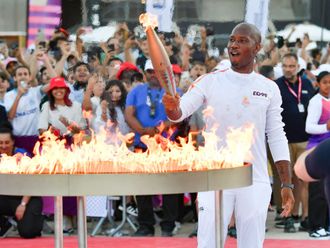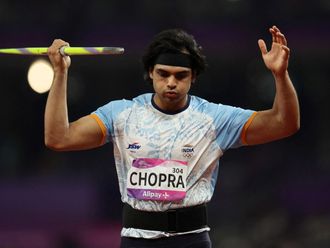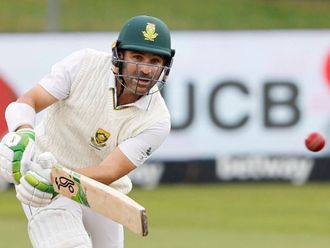
The duties of the Racing Veterinarian may not appear exhaustive but in reality these arbiters have a very important role to play in the supervision of race meets.
Dr David Skyes has held the position of the Emirates Racing Authority’s Regulatory Veterinary Steward for the past three years. Sykes previously worked in the quarantine department of Dubai Racing Club for a period of two years.
Originally from Sydney, Australia, he has also work experience as a New South Wales Thoroughbred Racing Board Veterinarian.
Consequent to the recent doping incidents in the UK, Gulf News spoke to Skyes in an effort to shed some light on the procedures adopted to safe-guard the sport from such irregularities.
In simple terms, what are the duties of a Veterinary Steward in horse racing?
The regulatory veterinary steward’s main roles are to safeguard the health and welfare of horses involved in racing in the UAE, provide and supervise veterinary services and drug sample collections at all official racetracks in the UAE. The role also involves providing advice to the Stewards and Board of the Emirates Racing Authority to assist in fulfilling their roles in the management and administration of racing in the UAE.
What kind of team do you head, and how closely are they involved in the everyday running of the sport?
The race day regulatory veterinary support team consists of two to four veterinary surgeons and some 15 ancillary staff. Their duties involve horse identification, equine influenza vaccine status, pre and post-race sample collections for drug analysis as well as health and suitability to race examinations.
Are all winning horses tested after a race?
Yes all winners are tested post-race. The majority of post-race samples collected are urine with less than five per cent as blood collections.
There were 563 post race samples taken during the 2012-13 season from 4039 starters at all racecourses. This represents a post-race sampling percentage of 14 per cent of all runners. Positive post-race samples as a percentage of runners was 0.03 per cent for the 2012-13 season.
Where are the tests done and how soon are the results obtained?
Initial analytical testing is done at the Dubai Equine Forensic Unit, an internationally accredited equine drug analysis laboratory. Any samples that have had an abnormality detected are then sent to either the Hong Kong Jockey Club Laboratory or Singapore Turf Club Laboratory.
Does racing in general have a common rule book regarding veterinary procedures, or does each jurisdiction adopt its own set of rules?
There is very little variation internationally on the race-day presence of prohibited substances. Major racing jurisdictions have a 24-hour pre-race ban on any therapeutic medications being administered.
The USA is one of the exceptions to this race day ban. The International Federation of Horseracing Authorities has moved towards an internationally harmonised screening limits programme for a number of therapeutic drugs so that trainers campaigning horses internationally have a consistent basis to work from for those medications. The ERA is a signatory to those screening limits.
Will the sport benefit by unifying its drug-testing protocols?
Drug testing protocols are already very similar in most horse racing jurisdictions. There already appears to be a move towards the harmonisation of screening limits of therapeutic substances through the IFHA.
Is horse racing associated with WADA (World Anti Doping Agency) and its World Anti-Doping Code?
No. WADA is human athlete World Anti - Doping Agency.
What do the general public need to know about the use of drugs in horse racing regards to detection, deterrence and prevention?
The welfare of the horses is foremost in the minds of all regulatory authorities, so drugs usage is strictly controlled and monitored.












